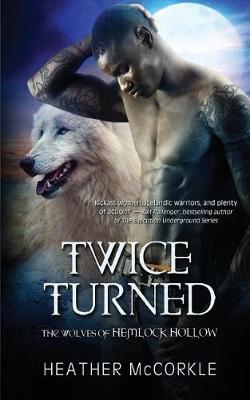Reviewed by llamareads on
In this particular world, werewolves were created by the Norse Gods and originated from Iceland, and are basically modern day Vikings. Ayra was raised in Hemlock Hollow, a rural town comprised entirely of werewolves. She was born with a birthmark that marks her as the reaper, a werewolf whose job is to kill werewolves who are unable to control their change. She's the monster the other monsters fear, but she's also a young woman who loves motorcycles and comic books, and who never wanted this power - unlike her brother. When her reaper powers are activated, her life is thrown into disarray, and she discovers that her abusive older brother has actually been changing people into werewolves against their will. On top of all that, her childhood best friend, Vidar, has returned after four years studying in Iceland - four years in which she's barely heard a word from him - and now he's been assigned as the reaper's guardian. As it becomes clear that her brother is not the only one gunning for her, can Ayra and Vidar survive long enough to rekindle their teenage love?
I liked Ayra. Though her role as the reaper has been forced on her, she's done her best to live up to it. She's pretty kickass, partly due to her innate reaper abilities, and partly because of the "training" forced on her by her family. Vidar was simply adorable. Ayra remembers him as her comic book nerd best friend, and he's still that, but years of studying in Iceland have honed him into (he hopes) someone who can protect Ayra. While Ayra's motivated by the need to stop her brother from enacting his grand scheme, Vidar just wants to protect her.
I think my main issue was the various bits of misunderstandings that kept Ayra and Vidar apart. Ayra thinks anyone who tries to be nice to her or get close to her is only doing it because she's the reaper, not out of any interest in Ayra herself. She thinks this applies even to Vidar, blaming him for abandoning her to her family's abuse. Vidar, on the other hand, has been forbidden from communicating with her while he was training in Iceland, and forbidden to explain that his vow of celibacy only extends until she picks a guardian (in order to prevent an attachment before the guardian is picked). I'm not a fan of this type of misunderstanding, to say the least, and I was disappointed to see it be pretty much the only thing keeping them apart. While I thought Vidar always acted with Ayra in mind (or what he thought Ayra would want or need), Ayra's motivations were murkier to me. She's simultaneously happy to see her best friend again and pissed that he's been gone for so long with practically no word, and her actions seesaw between those two emotions without much warning.
While I thought the Icelandic-spin on werewolves was interesting, some of the other world building fell short for me. There are multiple packs in Hemlock Hollow, though it's never really explained what the function of the packs is (or what an umbrella pack is) or why they're more than one. There are, apparently multiple types of shifter, not just werewolves, and a big shifter council that apparently does nothing more than make stupid decisions, along with vampires and some other mythical creatures that I'm not sue how'll fit into the greater story.
And on that note, I'm not sure if I'll continue reading the series. There were parts I found interesting - Ayra and Vidar's relationship, mostly - but too much of the rest of it wasn't to my taste. If you're looking for a Viking take on werewolves with a kickass heroine and nerdy hero, this may be the book for you.
I received this book for free from NetGalley in exchange for an honest review. This does not affect my opinion of the book or the content of my review.
Reading updates
- Started reading
- 19 July, 2018: Finished reading
- 19 July, 2018: Reviewed
